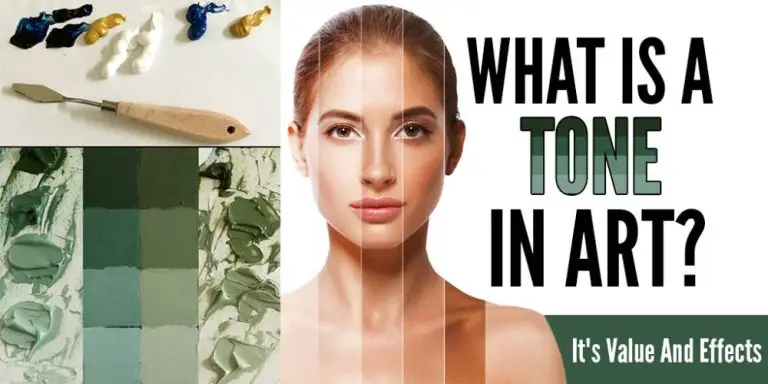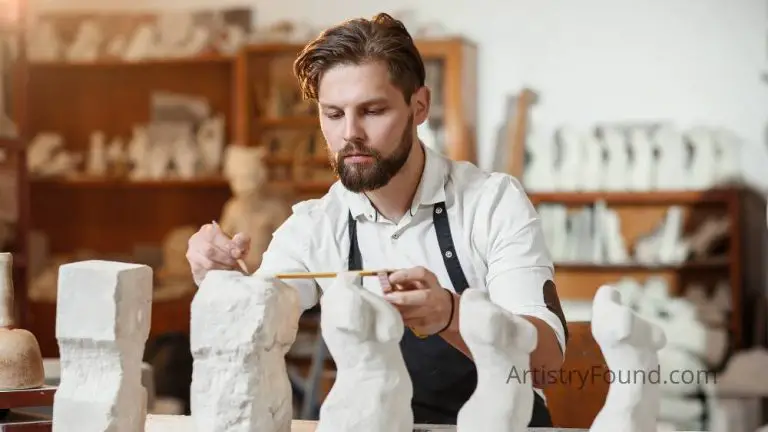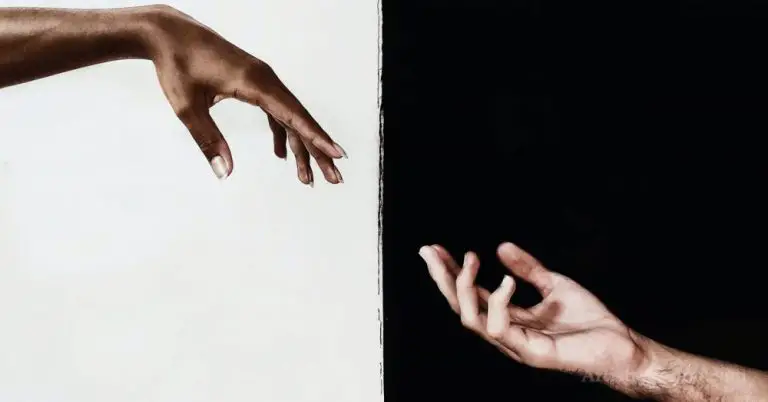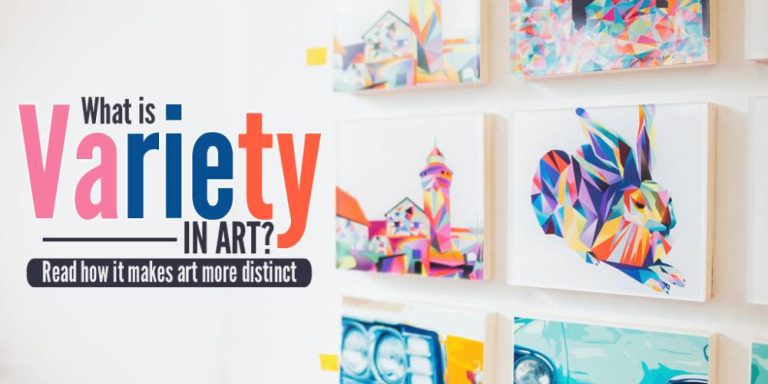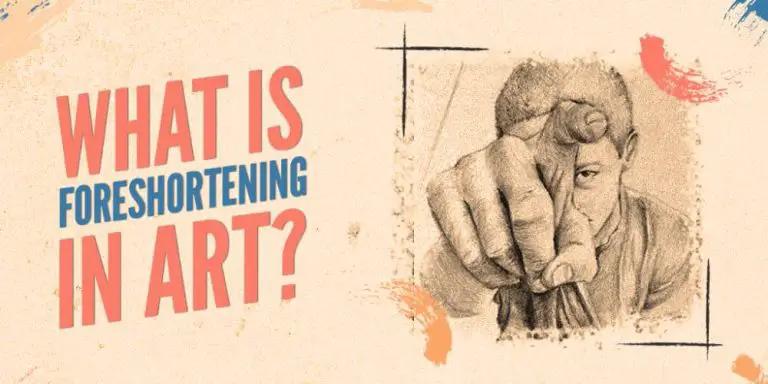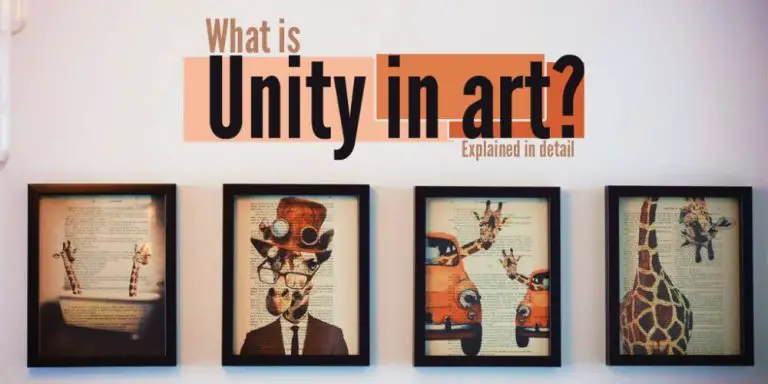What Is Texture In Art? (Why It’s Important)
Texture is an essential element of art for artists. It is one of the seven elements that an artist must consider before creating an artwork. So, what is texture in art, and why is it important?
Texture in art is how the surface of the artwork looks and feels to the physical touch. The understanding of texture is important for an artist to create powerful art pieces with depth. Furthermore, it is the element of art that impacts the feeling an artwork evokes in the viewer.
I cannot overemphasize the importance of the texture of an artwork. For me, the difference in the surface quality of a canvas creates a different feeling towards a painting or other artwork. In this text, I shall give an in-depth explanation of texture and its role in art.
The Concept Of Texture In Art

(This article may contain affiliate links and I may earn a commission if you make a purchase)
Texture refers to the tactile characteristic of an object’s surface. It uses our sense of touch to create emotions such as pleasure, discomfort, or familiarity in us. Thus, artists use this element to elicit emotional responses from their viewers.
Let’s take rocks, for instance. When you pick up a rock, it may have a rough or smooth texture, depending on the type of rock it is. But, regardless of how that rock feels, it is still a solid component. In the same vein, paint can have a rough surface or a smooth surface depending on the artist’s technique.
The physical texture is particularly important in three-dimensional artworks. Different pots, for example, feel different depending on the material a potter used for its creation. These materials include bronze, wood, clay, metal, or marble.
An artist can create different textures using several visual art techniques. For example, in paintings, the texture of oil paint will differ from that of watercolor. However, an artist can decide to combine different types of paint to give the artwork a different feel altogether.
When you touch the finished product, you’ll realize the difference between using just one type of paint and using multiple paint types in the same piece.
Types Of Texture in Art
There are two basic components of texture used in art. The first is the actual texture. When you touch a painting, the actual texture is a combination of how it looks and how it feels.
It encompasses both heavy paint application, such as an impasto effect, and the inclusion of materials in the painting to create a tactile surface. To create texture in their works, many artists use different materials. Sculptors, for instance, use a variety of materials to create textured sculptures that feel unique to an admirer.
Textures that fall into this category include rough, liquid, solid, wet, bumpy, gritty, soft, lumpy, and other characteristics.
The second is Visual Texture which usually applies to two-dimensional artworks. Artists can use different methods to give their work the appearance of being silky, smooth, rough, or otherwise. However, the texture they portray might not always be what you expect to feel when you touch them.
In paintings, it is possible to create visual textures with impasto techniques and brush strokes. Texture allows an artist to alter the lighting and position of the artwork and the effect it gives the viewer. The result of the artwork is something that looks so real that you might find it difficult to believe it’s a painting.
An artist can also utilize texture techniques in creating portraits. These techniques can change the appearance of the subject’s skin, making it look smooth or wrinkled depending on the artist’s preference.
Four Types of Texture Used in Art
While there are two basic components of texture (actual and visual), artists use four different texture types to stimulate a viewer’s interest in their work and make them “feel” the texture of the subject they’re looking at. These four types of texture are:
- Actual Texture – This is texture you can feel in physical form when touching it (i.e., tactile texture).
- Abstract Texture – A representation of texture that has been simplified by the artist to appear close to real texture when viewed.
- Invented Texture – This is a type of texture that looks interesting but is completly made up. It’s texture that does not represent the reality of anything in the real world.
- Simulated Texture – Simulated texture may look like something rough or soft but does not bear out when actually touched (i.e., the soft fur of an animal). It creates an implied texture.
Why Do Artists Use Texture?
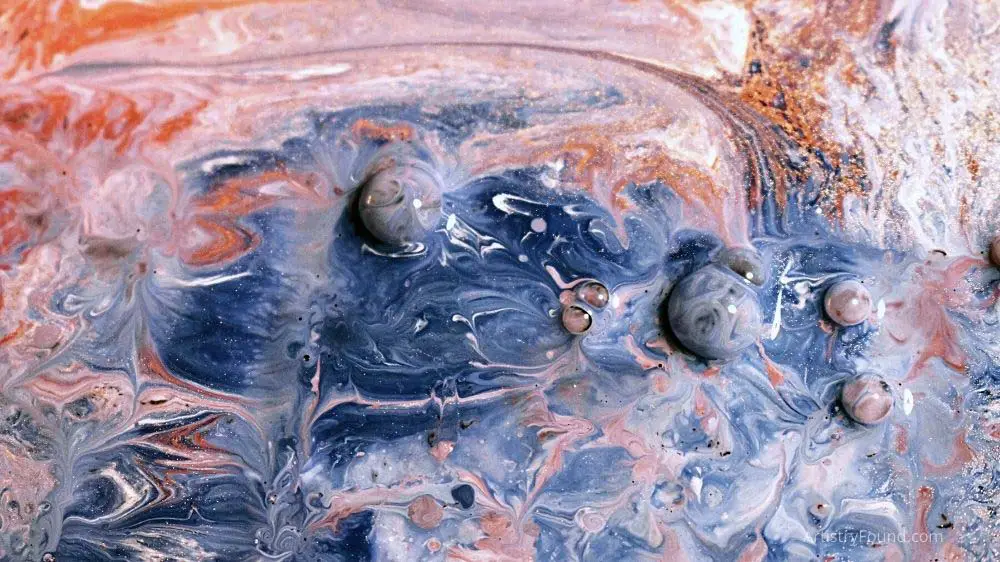
Artists use texture for different reasons depending on the aim they intend to achieve with their work. Texture techniques give more depth to an artwork making it look more natural. The more detail an artist puts into the texture of the work, the better the illusion of reality.
Therefore, artists employ this method to give their artwork a realistic look, creating a particular atmosphere in the painting. An artist can also add interest to the artwork by incorporating texture techniques into the piece.
One of the earliest types of this technique is impasto, where a painter applies thick layers of paint to the surface of the canvas. Thus, it makes the physical marks of a painting prominent. Examples of artists that employed impasto are Van Gogh and Jackson Pollock, though they used the technique to achieve different aims in their work.
If an artist does not prefer impasto, they could use thin paint to achieve a flat effect. This would remove a viewer’s attention from the physical components of the work to other aspects of the painting like surface, space, and color.
Texture also balances the composition of a painting, guiding the vision of an admirer. The right texture could add a little drama to the art or pull a viewer’s interest to certain parts of the artwork.
Recommended Reading: Five Reasons Why Van Gogh is Famous (And Deserves To Be!)
Examples Of Artists That Used Textures In Their Artworks
The texture is one of the oldest elements artists experimented with. We see texture techniques in 1501 when Michelangelo created David, a supposed replica of the Biblical King David. He used marble for its creation but sculpted it such that its shiny nature emphasized the physique of the sculpture.
From 1532-1534, Titian created Venus of Urbino. The large painting portrays a naked woman relaxing on the bed. He indicated the quality of the blanket she lay on with a unique texture technique and distinctly identified the quality of other fabrics on the bed.
In 1955, Alberto Giacometti created long skinny sculptures with passages of bronze. The art, Le chat, was a replica of a cat that had a hard, bumpy texture. This is in opposition to what a real cat feels like.
Another impressive artwork is Starry Night by Vincent Van Gogh. The art piece is a two-dimensional painting of a village that he positioned in the silhouette of a starry sky. Here, Gogh used the impasto painting technique, using thick brushstrokes that gave the painting a three-dimensional outlook.
Masters of the art used texture to give their artwork a unique touch. Thus, every artist must employ its technique to create art pieces that leave an impression on its viewers.
Final Thoughts
Now that we’ve learned more about using texture in art, we can see that “texture” is both tangible (we can see it and touch it) as well as intangible (adds depth to an art piece that triggers our senses).

